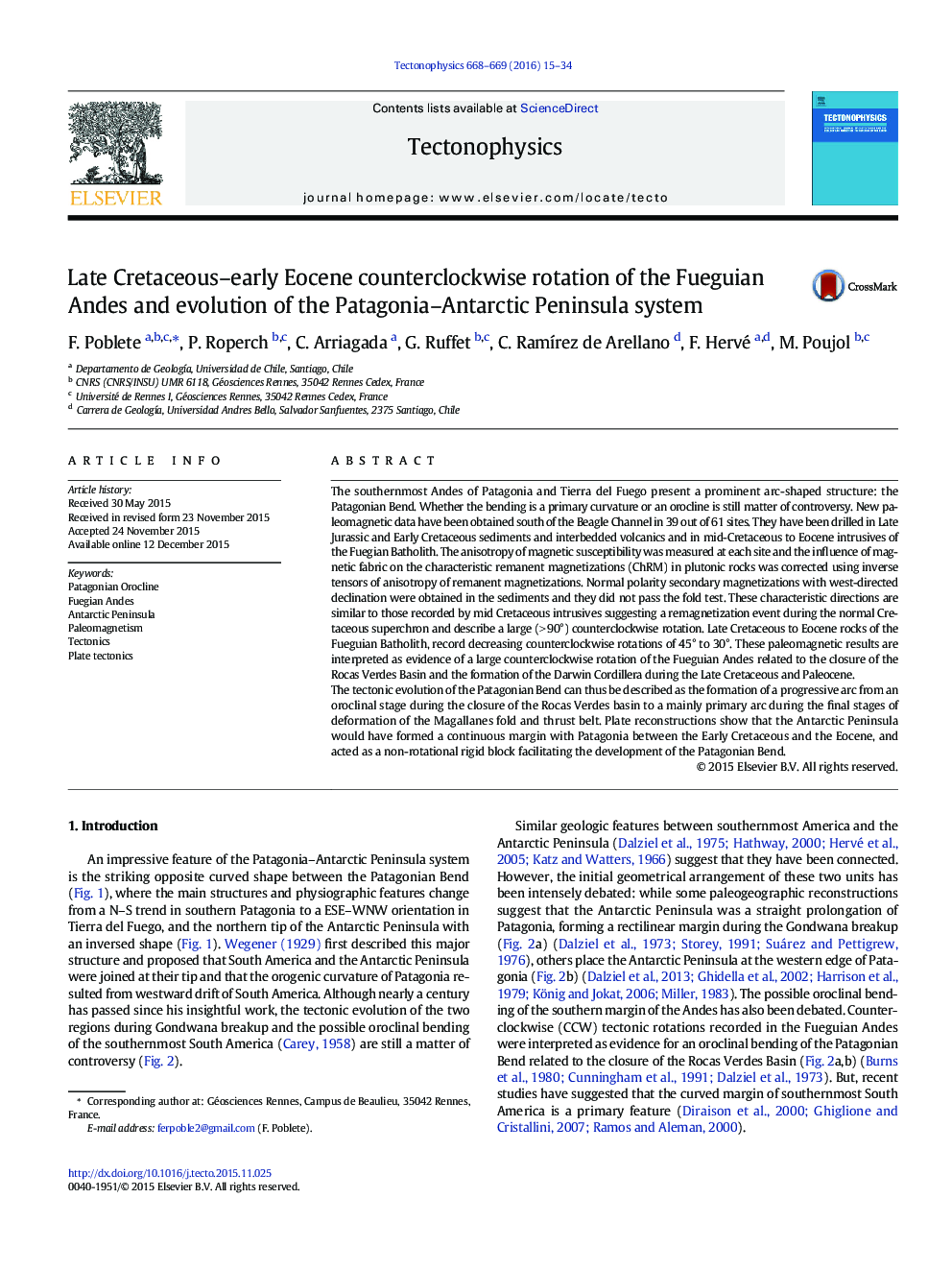| کد مقاله | کد نشریه | سال انتشار | مقاله انگلیسی | نسخه تمام متن |
|---|---|---|---|---|
| 4691416 | 1636727 | 2016 | 20 صفحه PDF | دانلود رایگان |
• New 40Ar/39Ar ages indicate mafic magmatism during the Paleocene.
• CCW rotations larger than 90° are recorded in the Fueguian Andes.
• The Fueguian pattern of rotation supports the hypothesis of oroclinal bending.
• A tectonic evolution of Patagonia and the Antarctic Peninsula is proposed.
The southernmost Andes of Patagonia and Tierra del Fuego present a prominent arc-shaped structure: the Patagonian Bend. Whether the bending is a primary curvature or an orocline is still matter of controversy. New paleomagnetic data have been obtained south of the Beagle Channel in 39 out of 61 sites. They have been drilled in Late Jurassic and Early Cretaceous sediments and interbedded volcanics and in mid-Cretaceous to Eocene intrusives of the Fuegian Batholith. The anisotropy of magnetic susceptibility was measured at each site and the influence of magnetic fabric on the characteristic remanent magnetizations (ChRM) in plutonic rocks was corrected using inverse tensors of anisotropy of remanent magnetizations. Normal polarity secondary magnetizations with west-directed declination were obtained in the sediments and they did not pass the fold test. These characteristic directions are similar to those recorded by mid Cretaceous intrusives suggesting a remagnetization event during the normal Cretaceous superchron and describe a large (> 90°) counterclockwise rotation. Late Cretaceous to Eocene rocks of the Fueguian Batholith, record decreasing counterclockwise rotations of 45° to 30°. These paleomagnetic results are interpreted as evidence of a large counterclockwise rotation of the Fueguian Andes related to the closure of the Rocas Verdes Basin and the formation of the Darwin Cordillera during the Late Cretaceous and Paleocene.The tectonic evolution of the Patagonian Bend can thus be described as the formation of a progressive arc from an oroclinal stage during the closure of the Rocas Verdes basin to a mainly primary arc during the final stages of deformation of the Magallanes fold and thrust belt. Plate reconstructions show that the Antarctic Peninsula would have formed a continuous margin with Patagonia between the Early Cretaceous and the Eocene, and acted as a non-rotational rigid block facilitating the development of the Patagonian Bend.
Journal: Tectonophysics - Volumes 668–669, 8 February 2016, Pages 15–34
